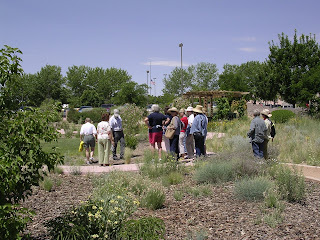 |
| Hail in Las Cruces on May 18, 2016 |
On May 18, 2016 a storm moved through Dona Ana County dropping pea to marble sized hail. In some locations, crops and garden plants sustained significant damage from this storm. In addition to the physical injury created by the hail and wind, the plants are now vulnerable to infection by fungi and bacteria that can take advantage of the wounds. In some situations, the use of fungicides/bactericides may be helpful in preventing or reducing additional losses to these organisms.
 |
Onion field one week before hail storm (left) and 2 days after hail storm (right)
(Photos: Jason French, NMSU - PDC) |
 |
Hail damage on grapes - approximately 30% of the grapes at the
Fabian Garcia Ag Science Center were damaged by the storm
(Vine photos: Jason French, NMSU - PDC;
Fruit photo: Daniel Goodrich, NMSU - Viticulture Program) |
 |
| Pecan leaves damaged by hail (Photos: Jason French, NMSU - PDC) |
 |
Tomato leaf damaged by hail: photo on left was taken immediately
following the hail storm and the photo on the right, of the same leaf, was
taken 3 days later (Photos: Natalie Goldberg, NMSU - PDC) |
 |
Hail damage on tomato fruit
(Photo: Natalie Goldberg, NMSU - PDC) |
 |
Hail damage on sage
(Photo: Natalie Goldberg, NMSU - PDC) |












